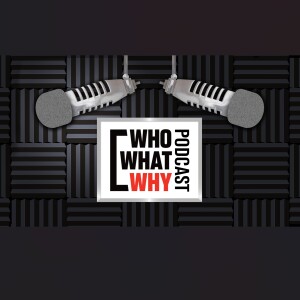
- Podcast Features
-
Monetization
-
Ads Marketplace
Join Ads Marketplace to earn through podcast sponsorships.
-
PodAds
Manage your ads with dynamic ad insertion capability.
-
Apple Podcasts Subscriptions Integration
Monetize with Apple Podcasts Subscriptions via Podbean.
-
Live Streaming
Earn rewards and recurring income from Fan Club membership.
-
Ads Marketplace
- Podbean App
-
Help and Support
-
Help Center
Get the answers and support you need.
-
Podbean Academy
Resources and guides to launch, grow, and monetize podcast.
-
Podbean Blog
Stay updated with the latest podcasting tips and trends.
-
What’s New
Check out our newest and recently released features!
-
Podcasting Smarter
Podcast interviews, best practices, and helpful tips.
-
Help Center
-
Popular Topics
-
How to Start a Podcast
The step-by-step guide to start your own podcast.
-
How to Start a Live Podcast
Create the best live podcast and engage your audience.
-
How to Monetize a Podcast
Tips on making the decision to monetize your podcast.
-
How to Promote Your Podcast
The best ways to get more eyes and ears on your podcast.
-
Podcast Advertising 101
Everything you need to know about podcast advertising.
-
Mobile Podcast Recording Guide
The ultimate guide to recording a podcast on your phone.
-
How to Use Group Recording
Steps to set up and use group recording in the Podbean app.
-
How to Start a Podcast
-
Podcasting
- Podcast Features
-
Monetization
-
Ads Marketplace
Join Ads Marketplace to earn through podcast sponsorships.
-
PodAds
Manage your ads with dynamic ad insertion capability.
-
Apple Podcasts Subscriptions Integration
Monetize with Apple Podcasts Subscriptions via Podbean.
-
Live Streaming
Earn rewards and recurring income from Fan Club membership.
-
Ads Marketplace
- Podbean App
- Advertisers
- Enterprise
- Pricing
-
Resources
-
Help and Support
-
Help Center
Get the answers and support you need.
-
Podbean Academy
Resources and guides to launch, grow, and monetize podcast.
-
Podbean Blog
Stay updated with the latest podcasting tips and trends.
-
What’s New
Check out our newest and recently released features!
-
Podcasting Smarter
Podcast interviews, best practices, and helpful tips.
-
Help Center
-
Popular Topics
-
How to Start a Podcast
The step-by-step guide to start your own podcast.
-
How to Start a Live Podcast
Create the best live podcast and engage your audience.
-
How to Monetize a Podcast
Tips on making the decision to monetize your podcast.
-
How to Promote Your Podcast
The best ways to get more eyes and ears on your podcast.
-
Podcast Advertising 101
Everything you need to know about podcast advertising.
-
Mobile Podcast Recording Guide
The ultimate guide to recording a podcast on your phone.
-
How to Use Group Recording
Steps to set up and use group recording in the Podbean app.
-
How to Start a Podcast
-
Help and Support
- Discover

RadioWhoWhatWhy: While Some States Are Still Counting Ballots, California Is Burning
California forests have long been a disaster waiting to happen. Forest density, antiquated forest practices, stressed and dead trees as a result of bug infestation, conflicts between state and federal government, and private property owners wanting to live close to the “wildland-urban interface” are just a few of the problems.
In this week’s WhoWhatWhy podcast, we talk with longtime California environmental reporter, Julie Cart, about just how bad the problem is and what is being done to prevent more death and destruction.
She explains that a full 30 percent of California is forested. Of this total, 60 percent is owned by the federal government, 2 percent by the state of California, and the rest is owned either privately or by local governments. Each has a different approach to dealing with the problem.
California has an estimated 129 million dead trees, an acknowledged factor in spreading wildfires, Cart says. The cost for removing a single dead tree is approximately $1,000, and the optics of cutting down trees, even dead ones, in a state with strong environmental rules make remediation even more difficult.
The impact of climate change on forest fires involves a deadly feedback loop. So many of the fires are a direct result of extended drought related to climate change. But in torching so many dead trees, a severe fire season of one or two months can release enormous amounts of carbon into the air — more than that emitted by all the cars in California each year — which significantly adds to the buildup of greenhouse gases fueling climate change.
Last year’s fires cost over $9 billion; this year the toll will be even higher. In both dollars and lives lost. Cart points out that while Cal Fire and the US Forest Service have vast resources, so much of those resources are diverted to firefighting, leaving little time or money to do the necessary work of prevention.
Cart suggests that perhaps the real solution is simply to tell people, as they do in Australia, that if they choose to live in certain areas, they cannot expect a fire truck to roll up the driveway during the next disaster. They will have to learn how to fend for themselves.
More Episodes
 2025-07-04
2025-07-04
 2025-05-09
2025-05-09
 2025-03-21
2025-03-21
 2025-03-14
2025-03-14
 2025-03-04
2025-03-04
Create your
podcast in
minutes
- Full-featured podcast site
- Unlimited storage and bandwidth
- Comprehensive podcast stats
- Distribute to Apple Podcasts, Spotify, and more
- Make money with your podcast
It is Free
- Privacy Policy
- Cookie Policy
- Terms of Use
- Consent Preferences
- Copyright © 2015-2025 Podbean.com




